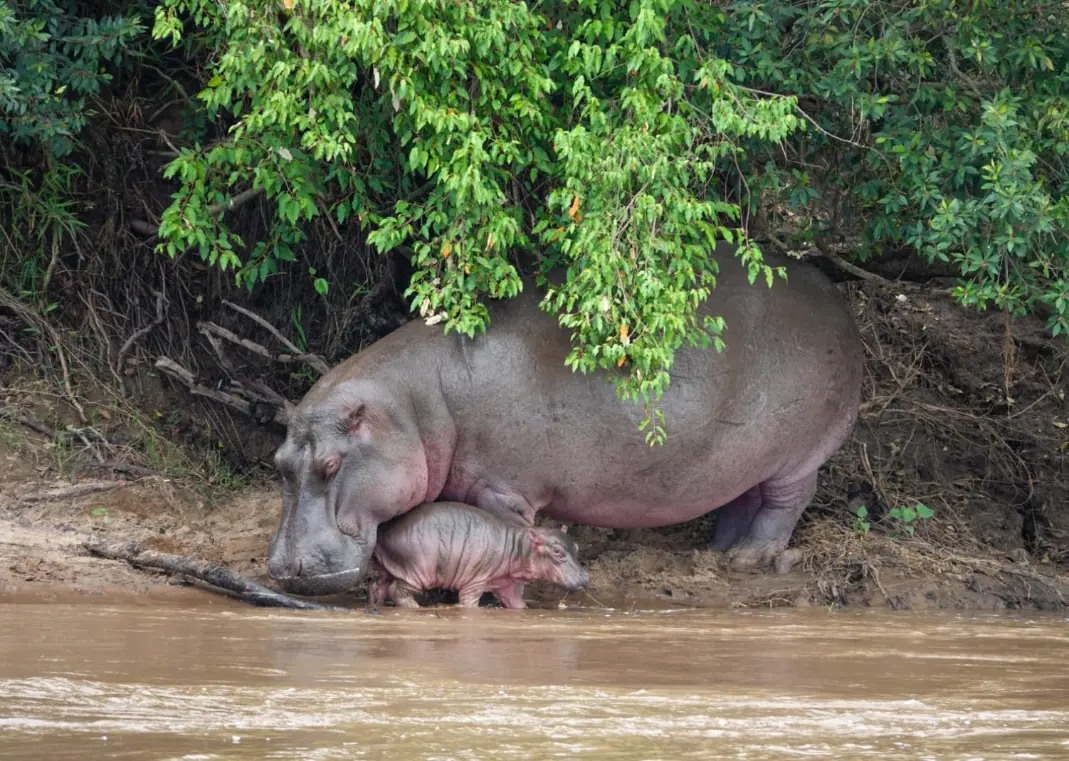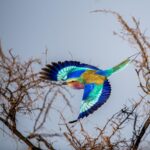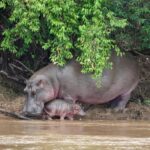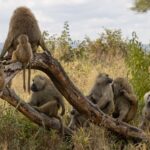
Kenya stands out as a premier safari destination due to a confluence of unique experiences that differentiate Kenya from other safari destinations offering travelers an unparalleled and deeply immersive experience. These distinguishing factors range from its iconic wildlife spectacles and diverse landscapes to its rich cultural heritage and strong commitment to sustainable tourism.
Unique experiences that differentiate Kenya from other safari destinations
Kenya is globally recognized for its extraordinary wildlife, particularly the “Big Five” (lion, elephant, buffalo, leopard, and rhino), which are readily sighted across its national parks and conservancies . Beyond these well-known species, Kenya is also home to rarer animals such as Grevy’s zebra, Rothschild’s giraffe, and the African wild dog, offering a broader spectrum of wildlife encounters.
Iconic Wildlife Diversity and Natural Wonders
The Great Migration is arguably Kenya’s most famous natural spectacle, a phenomenon shared only with Tanzania. Each year, over two million wildebeest, zebras, and gazelles traverse from Tanzania’s Serengeti into Kenya’s Maasai Mara in search of fresh grazing grounds. Witnessing the dramatic Mara River crossings, where predators lie in wait, is a highlight that draws visitors from around the globe. This unique experiences that differentiate Kenya from other safari destinations, an event that is a powerful demonstration of nature’s raw power and is a primary reason many choose Kenya for their safari.
Kenya’s geographical diversity further enhances its appeal. The country boasts a remarkable array of landscapes, from the vast open savannahs of the Maasai Mara and Amboseli to the snow-capped peaks of Mount Kenya, lush forests, and the pristine white sands of its Indian Ocean coastline. This variety allows for diverse safari experiences, combining traditional game drives with mountain trekking or relaxing beach getaways, offering a “bush and beach” holiday option that few other destinations can match.
Cultural Richness and Authentic Experiences
A significant differentiator for Kenya is its vibrant cultural heritage, particularly the presence of indigenous communities like the Maasai and Samburu people. Travelers have unique experiences that differentiate Kenya from other safari destinations and unique opportunities for authentic cultural interactions, including guided visits to traditional villages where they can learn about local customs, attire, and ceremonies. These interactions provide a deeper understanding of Kenya’s cultural fabric, moving beyond mere wildlife viewing to a more holistic travel experience.
Furthermore, Kenya has embraced community-based tourism initiatives, which empower local communities to participate directly in the tourism industry. This includes hosting visitors in eco-lodges and guiding cultural tours, ensuring that tourism directly benefits local livelihoods and promotes economic growth. This model fosters a more responsible and impactful form of tourism, allowing visitors to contribute positively to the regions they explore.
Commitment to Sustainable Tourism and Conservation
Kenya has demonstrated a strong and progressive commitment to wildlife conservation and sustainable tourism practices. The country has implemented robust policies to protect its rich biodiversity, working in collaboration with NGOs and conservationists. National parks and conservancies enforce strict measures against poaching, safeguard endangered species, and maintain healthy ecosystems, providing travelers with a guilt-free safari experience.
Renowned conservancies such as Ol Pejeta, Lewa, and the Maasai Mara Conservancies are leading examples of conservation in action. These areas operate under sustainable models that balance tourism, wildlife protection, and community engagement, showcasing Kenya’s dedication to eco-friendly tourism. Ol Pejeta, for instance, is home to the last two northern white rhinos, offering a poignant reminder of conservation efforts and the chance to witness critically endangered species. Many safari operators in Kenya are dedicated to eco-friendly practices, blending conservation efforts with their packages.
Accessibility and Diverse Safari Options
One of the unique experiences that differentiate Kenya from other safari destinations is Nairobi, Kenya’s capital, serves as a major international hub with Jomo Kenyatta International Airport, making the country highly accessible for international travelers. From Nairobi, visitors can easily access various national parks, including Nairobi National Park, Amboseli, and the Maasai Mara, often with short transfers. This ease of access allows for efficient travel planning and maximizes time spent on safari.
Kenya also offers a wide range of safari types, catering to diverse preferences and budgets. Options span from ultra-luxurious lodges and private conservancies offering exclusive experiences to budget-friendly camping safaris. This flexibility ensures that travelers of all profiles can find their perfect adventure, whether seeking opulent indulgence or a more rugged, authentic experience.
Beyond traditional game drives, Kenya provides a plethora of diverse activities that enrich the safari experience. These include walking safaris, night drives, hot air balloon safaris over the Maasai Mara, and opportunities to engage with local communities. For adventure seekers, activities like hiking Mount Kenya, exploring the Great Rift Valley, or even surfing in Diani Beach are available. These varied options provide different perspectives of the landscapes and deeper insights into local life, adding significant depth to the safari.
Unique Experiences and Highlights
Several specific unique experiences that differentiate Kenya from other safari destinations and experiences further set Kenya apart:
- Hot Air Balloon Safaris: Soaring over the Maasai Mara in a hot air balloon offers a serene and breathtaking perspective of the vast plains and wildlife below, often culminating in a champagne breakfast.
- Samburu ‘Singing Wells’: Witnessing the Samburu pastoralists sing their unique family songs while drawing water for their cattle is a deeply authentic and moving cultural experience.
- Vintage Biplane Flights: In conservancies like Lewa, travelers can take scenic flights in open-cockpit biplanes, offering a unique aerial view of the wildlife and landscapes.
- Giraffe Manor: This iconic Nairobi property allows guests to interact directly with Rothschild giraffes, who often join guests for breakfast, providing an unforgettable and highly Instagram Mable experience that also supports conservation.
- Marine Wildlife and Coastal Getaways: Kenya’s coastline, with destinations like Diani Beach and the Lamu Archipelago, offers stunning white sands, clear turquoise waters, and opportunities for snorkeling, SCUBA diving, and encountering diverse marine life, including whale sharks and manta rays. This “bush and beach” combination is a significant draw.
- Conservation-Focused Safaris: Opportunities to participate in rhino protection, wildlife monitoring, and anti-poaching initiatives allow travelers to make a tangible impact and deepen the value of their safari.
These unique experiences that differentiate Kenya from other safari destinations and elements collectively contribute to Kenya’s reputation as a top-tier African safari destination, offering a comprehensive and memorable journey that extends far beyond typical wildlife viewing
Cost of safari in Kenya
To enjoy the unique experiences that differentiate Kenya from other safari destinations, cost is a factor. The cost of a safari in Kenya varies significantly based on several factors, including the type of safari experience, duration, accommodation, time of year, mode of transport, and additional activities. As of 2025, a typical private safari in Kenya starts around $300 per person per day, while budget options can be as low as $150 per person per day for shared group safaris with basic camping. Luxury safaris can range from $600 to over $1,500 per person per day
Factors Influencing Safari Costs
Several key factors determine the overall cost of a Kenyan safari:
- Type of Safari Experience:
- Budget Safaris: These are the most affordable, typically involving shared group tours, basic camping or budget lodges, and often utilize safari minibuses (vans) for transport. Prices generally range from $150 to $350 per person per day. While cost-effective, they may offer less flexibility, more crowded vehicles, and less experienced guides.
- Mid-Range Safaris: These offer a balance of comfort and affordability, with prices typically between $300 and $600 per person per day. They usually include comfortable lodges or tented camps with private bathrooms, and often use 4×4 Toyota Land Cruisers for game drives. This is often considered the best value for money, providing a significantly better experience than budget options for a relatively small price increase.
- Luxury Safaris: These provide an exclusive, high-end experience with prices starting from $600 and going upwards of $1,500 per person per day, and sometimes even reaching $5,000 or more. They feature top-tier accommodation, private game drives with expert guides, gourmet dining, and often include internal flights between parks.
- Duration of the Safari: To explore these unique experiences that differentiate Kenya from other safari destinations, the total cost is directly proportional to the length of the trip. A 3-day safari will naturally be less expensive than a 7-day or 10-day safari, even if the per-day rate remains constant. For instance, a 3-day budget safari might cost $450-$600 per person, while a 7-day luxury safari could be $3,500-$8,400 per person.
- Time of Year (Seasonality):
- Peak Season (July to October, and mid-December to mid-January): This is the most expensive period due to high demand, especially coinciding with the Great Wildebeest Migration in the Masai Mara. Prices can be significantly higher, with accommodation costs potentially doubling.
- Shoulder Season (January to February, November to mid-December): These months offer a good compromise with lower prices (around 12-15% savings) and fewer crowds, while still providing excellent wildlife viewing.
- Low Season / Green Season (March to May): This is the cheapest time to visit, with potential savings of 20-30% on full safari packages, and sometimes up to 50% on accommodation. However, heavy rains can make travel challenging, and some camps may close.
- Accommodation Type and Location: Accommodation is a major cost driver and often the big factor in considering these unique experiences that differentiate Kenya from other safari destinations; often accounting for about 30% of the total safari cost. Lodges and tented camps within national parks are generally more expensive than those located just outside park boundaries. Luxury tented camps can be pricier than larger lodges.
- Mode of Transport:
- Road Travel: This is generally more affordable, especially for groups. Safari minibuses (vans) are the cheapest option, while 4×4 Toyota Land Cruisers are more expensive but offer greater comfort and capability. A private Land Cruiser can cost $250-$275 per vehicle per day.
- Fly-in Safaris: These are the most expensive but save significant travel time, connecting parks via small planes. Flights can cost around $300 per person per way.
- Group Size: Traveling in a larger group significantly reduces the per-person cost by sharing fixed expenses like vehicle hire and guide fees. Solo travelers face higher per-person costs as they bear all fixed expenses.
- Park Entry Fees: These are mandatory and vary by park and residency status. As of July 1, 2024, Masai Mara fees are $200 per adult per day during peak season (July-December) and $100 during low season (January-June). Other parks like Amboseli and Tsavo also have significant daily fees. Park fees can constitute around 30% of the total safari cost a considerable amount that one must bear in mind while listing unique experiences that differentiate Kenya from other safari destinations.
- Additional Activities: Optional activities like hot air balloon rides ($550-$650 per person), Maasai village visits ($30-$80 per person), night game drives, bush walks, and specialized safaris (e.g., birding, photography) add to the overall expense.
Other Costs to Consider
Beyond the core safari package, travelers should budget for:
- International Flights: Costs vary widely based on origin and time of booking, typically ranging from $600 to $1,500 round-trip from the US or Europe to Nairobi.
- Electronic Travel Authorization (eTA): As of January 2024, a visa is no longer required, but an eTA is mandatory and costs $30 USD per person.
- Tips/Gratuities: Tipping is customary. A guideline is around $20 per day for a driver-guide (for a party of two), plus additional tips for lodge staff.
- Travel Insurance: Essential for unforeseen circumstances, typically costing $50-$100 for a week-long safari.
- Vaccinations and Anti-malarial Medication: These are health-related costs that vary by individual needs and location.
- Souvenirs and Personal Expenses: Budget for shopping, alcoholic beverages (often not included in package deals), and laundry services.




Leave a comment:
You must be logged in to post a comment.